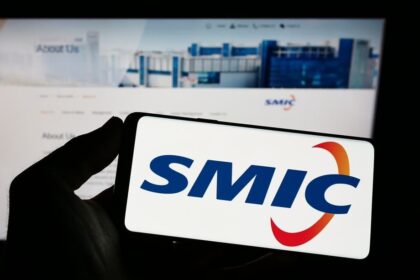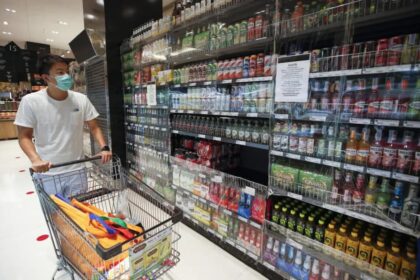Malaysia takes center stage in the AI hardware buildout
Austria based AT&S is accelerating expansion in Kulim, Kedah, after a rapid pickup in orders for the specialized building blocks behind modern artificial intelligence systems. The company’s first factory in Malaysia, opened in January 2024, has reached full capacity. A new campus worth about 5 billion ringgit opened at Kulim Hi Tech Park in May and additional phases are being planned to keep pace with demand. The sites produce integrated circuit substrates, the multilayer bases that connect advanced chips to the rest of a computer system, which are used in high performance computing, cloud data centers, and supercomputers.
- Malaysia takes center stage in the AI hardware buildout
- Why Malaysia matters in the chip race
- What IC substrates are and why AI needs them
- Inside the AT&S build in Kulim
- Geopolitics, tariffs, and a China for China plan
- Financing and sustainability for long term growth
- Talent and local ecosystem challenges
- Outlook for AI demand and revenue
- Key Points
Since setting up in Malaysia last year, AT&S has invested more than 1.2 billion euros in facilities and operations and earmarked a further 500 million euros for the next phase. The company employs about 2,100 people in the country. It reported first half revenue of 846 million euros, up 6 percent from a year earlier, and guides to roughly 1.7 billion euros in sales for the current financial year. Management expects growth above 23 percent in the next fiscal year as AI infrastructure spending stays strong.
The expansion reflects a broader shift in the global semiconductor supply chain. Companies are spreading production across more locations, a move shaped by pandemic lessons and friction between the US and China. Malaysia has emerged as a prime destination thanks to decades of experience in chip assembly and testing, a large base of suppliers, investment friendly policies, and an English speaking workforce. Those strengths are attracting chip makers, equipment suppliers, and cloud companies racing to build the next waves of AI capacity.
Why Malaysia matters in the chip race
Malaysia is now one of the world’s key electronics hubs. It is the sixth largest exporter of semiconductors and is responsible for packaging a sizable share of chips designed in the United States. Penang and Kulim anchor a dense ecosystem where global players sit alongside local champions, training centers, and logistics providers. That concentration creates network effects that lower costs and speed up production ramp for newcomers.
Global names have been doubling down. Intel is building what it describes as its first overseas facility for advanced three dimensional chip packaging in Malaysia. Infineon has committed billions of dollars to power semiconductor capacity. A large scale AI cloud and supercomputing center is being developed with top tier partners. Major cloud providers are expanding data centers, which further boosts demand for high performance processors and the substrates that carry them. These projects ride a strong domestic policy push. The government has launched a national semiconductor strategy and set up a dedicated AI office to move the country up the value chain in chip manufacturing, design, and packaging.
Foreign direct investment into digital and electronics has been robust, supporting jobs and infrastructure in northern Malaysia. Utilities, transport links, and green energy capacity are being upgraded to support round the clock manufacturing and highly automated lines. The result is a location where complex products like IC substrates can be scaled in months rather than years once tools and talent are in place.
What IC substrates are and why AI needs them
IC substrates sit between a silicon die and a printed circuit board. They act like a high density highway that routes power and data to and from the chip. The layers inside a substrate contain ultra thin copper traces and tiny vias that must be etched with extreme precision. Materials such as advanced resin systems and glass fiber cores are used to achieve the rigidity and electrical performance required for the fastest processors.
AI servers use graphics processing units and specialized accelerators that push huge volumes of data across many chiplets and memory stacks. That architecture demands substrate designs with very fine lines, tight tolerances, and thermal stability. Yields are difficult to achieve and the learning curve is steep. Only a small group of manufacturers can deliver consistent quality at scale. When data center operators buy hundreds of thousands of accelerators, each module depends on a substrate that works flawlessly. This is why capacity expansions in substrates can become a bottleneck for the entire AI supply chain.
As chip makers embrace chiplet based design and advanced packaging, the role of substrates grows. The substrate is where signal integrity is preserved, power spikes are handled, and interfaces to high bandwidth memory are routed. Small imperfections can lead to performance loss or device failure. That explains why AI demand has translated so quickly into full order books for companies like AT&S that specialize in high end substrate technology.
Inside the AT&S build in Kulim
AT&S officially opened its first Kulim plant in January 2024 and later launched a large campus at Kulim Hi Tech Park. The facilities focus on high end IC substrates for next generation microchips used in servers, data centers, and other AI heavy systems. The company says its Malaysian operations have reached full utilization and that new capacity is coming online in stages. The long term goal is to be among the top three substrate makers globally while maintaining a tightly linked network of sites in Chongqing, Kulim, and Leoben that share tooling know how and engineering expertise.
Production in Kulim has ramped to series output for a flagship customer in data center processors. The site has earned high volume manufacturing certification and is adding equipment and shifts to meet schedules. AT&S has invested in a large cleanroom footprint, roughly a quarter million square meters of gross floor area, and about 500 advanced machines. The company has also invested heavily in local research and development and works with Malaysian institutions to build skills specific to substrate fabrication.
Ingolf Schroeder, executive vice president of the microelectronics business unit at AT&S, said the start of series output at Kulim marked a strong milestone for both the company and the country.
Starting high volume production is not only a milestone for AT&S but also an important step for Malaysia.
Schroeder said the Kulim plant will be a main contributor to growth and that the team intends to expand its customer base beyond an initial anchor account in the near term.
If you believe AI will be the driving force, there will not be a downturn. The products we manufacture here are top tier, robust and resilient. There is competition, but very few can produce these next generation products because of their complexity.
AT&S has long argued that demand in high performance computing will outlast the traditional chip cycle. The company’s strategic focus on the data center and AI segments aligns with the ramp in large language models and cloud training clusters. The new Kulim capacity supports that thesis.
Geopolitics, tariffs, and a China for China plan
Trade tensions are now part of every chip executive’s risk checklist. AT&S says the direct impact of new US tariffs has been limited so far. The substrates it makes in Malaysia are shipped mainly to outsourced assembly and test providers in Asia and are not classified as final semiconductor products under the tariff codes. The company’s product flows today do not require direct shipment to the United States, which reduces exposure to tariff changes. Management also uses a China for China approach, serving Chinese customers from Chinese factories in Shanghai and Chongqing to shield cross border operations from policy swings.
Yap Suan See, senior vice president and managing director at AT&S in Malaysia, said the company is monitoring policy shifts closely while keeping production focused on its current customer routing in Asia.
We are, from today’s perspective, not affected. We are not making and supplying the finished products.
Some industry players are building new facilities in the United States, including in Arizona. If downstream customers ask for direct shipments into the United States in the future, tariff exposure could change. For now, AT&S reports limited impact on its Malaysian operations and continues to add capacity to serve regional assembly hubs. The company is also working to localize more inputs in Malaysia, including critical chemicals, to make the supply chain more resilient.
Financing and sustainability for long term growth
AT&S has paired its expansion with sustainability targets. It signed a sustainability linked loan agreement with the International Finance Corporation for 250 million US dollars, with an option for an additional 150 million US dollars from local banks under the same terms. The facility ties financing to key environmental objectives. One target commits AT&S to reduce annual greenhouse gas emissions by 31 percent by March 31, 2028 compared with the 2022 financial year baseline. The new Kulim lines feature advanced recycling systems and a sustainable energy concept integrated into the plant design.
Petra Preining, chief financial officer of AT&S, said the financing supports both capacity growth and environmental performance as shipments of high end substrates begin for leading data center processors.
IFC’s support helps us expand in Kulim while we deliver the first waves of high end IC substrates for data center processors. The loan’s sustainability targets are aligned with our plan to lower emissions as we scale.
Company leaders say sustainability has become a qualification for long running supply agreements with major chip makers and cloud providers. As AI computing scales, power and water footprints are in sharp focus. Investments in cleaner energy, heat recovery, and chemical recycling can trim operating costs over time while meeting the environmental expectations of large customers.
Talent and local ecosystem challenges
Malaysia’s chip cluster offers deep experience in assembly and testing, but high end substrates require a broader pool of process engineers, materials scientists, and equipment specialists. AT&S currently employs about 2,100 people in Malaysia and expects hiring to grow as new tools are qualified. Early plans for phase one of the Kulim campus envisioned several thousand jobs once the site matures. The company has partnered with local institutions, including industry led groups, to adapt curricula for substrate engineering and process control so graduates can step into production and engineering roles faster.
Executives say talent is the top challenge. The company supports internships, apprenticeships, and technology transfer programs that expose students to the realities of substrate manufacturing. The goal is to develop expertise that is scarce worldwide and to anchor that know how in northern Malaysia. Officials have also proposed steps like allowing more foreign graduates to work locally to close near term gaps. Over time, a deeper supplier base for materials and services would lift local content and shorten lead times for maintenance and spare parts.
The government’s national semiconductor strategy aims to push the country up the value chain, from backend services into advanced packaging and design. Partnerships with global IP providers and chip designers are intended to seed local capabilities in AI focused chips. These efforts support companies such as AT&S that rely on a steady supply of skilled workers and local partners.
Outlook for AI demand and revenue
The current upcycle in semiconductors is anchored in AI. Sales of data center GPUs and training clusters are at record levels and show few signs of slowing. Industry data points to strong growth across logic and memory as cloud providers build capacity for new AI models and inference at scale. Substrates remain a key pinch point because the ramp in advanced packaging and chiplet designs demands more layers, finer lines, and higher reliability. Those dynamics underpin AT&S’s view on revenue growth in the next financial year.
Power, water, and logistics will be watched closely as Malaysia scales this production. Many investors are also looking at how quickly the local supplier base for chemicals and materials can grow to support round the clock operations. For AT&S, the combination of new lines in Kulim, a tightly integrated network with Austria and China, and a customer pipeline that starts with a marquee data center chip designer positions the company to respond quickly to orders. If AI workloads keep expanding, high end substrates will remain in short supply, and Malaysia will continue to be a focal point for the build out.
Key Points
- AT&S has reached full capacity at its first Kulim plant and is adding new lines at a 5 billion ringgit campus.
- The company has invested more than 1.2 billion euros in Malaysia and committed another 500 million euros for the next phase.
- Malaysian facilities make IC substrates for high performance computing, cloud data centers, and AI systems.
- First half revenue was 846 million euros, with full year sales guided to about 1.7 billion euros and growth above 23 percent expected next year.
- Malaysia’s chip cluster draws global investment and is moving toward higher value activities in advanced packaging and design.
- AT&S reports limited impact from US tariffs as its Malaysia made substrates ship mainly to assembly providers in Asia.
- The company signed a 250 million US dollar sustainability linked loan with IFC, tied to a 31 percent emissions reduction target by March 2028.
- Talent development and supplier localization are top priorities as Kulim ramps toward thousands of jobs and larger output volumes.












